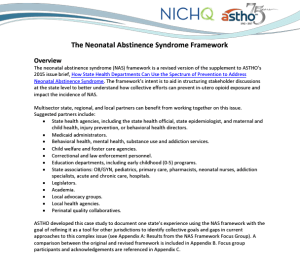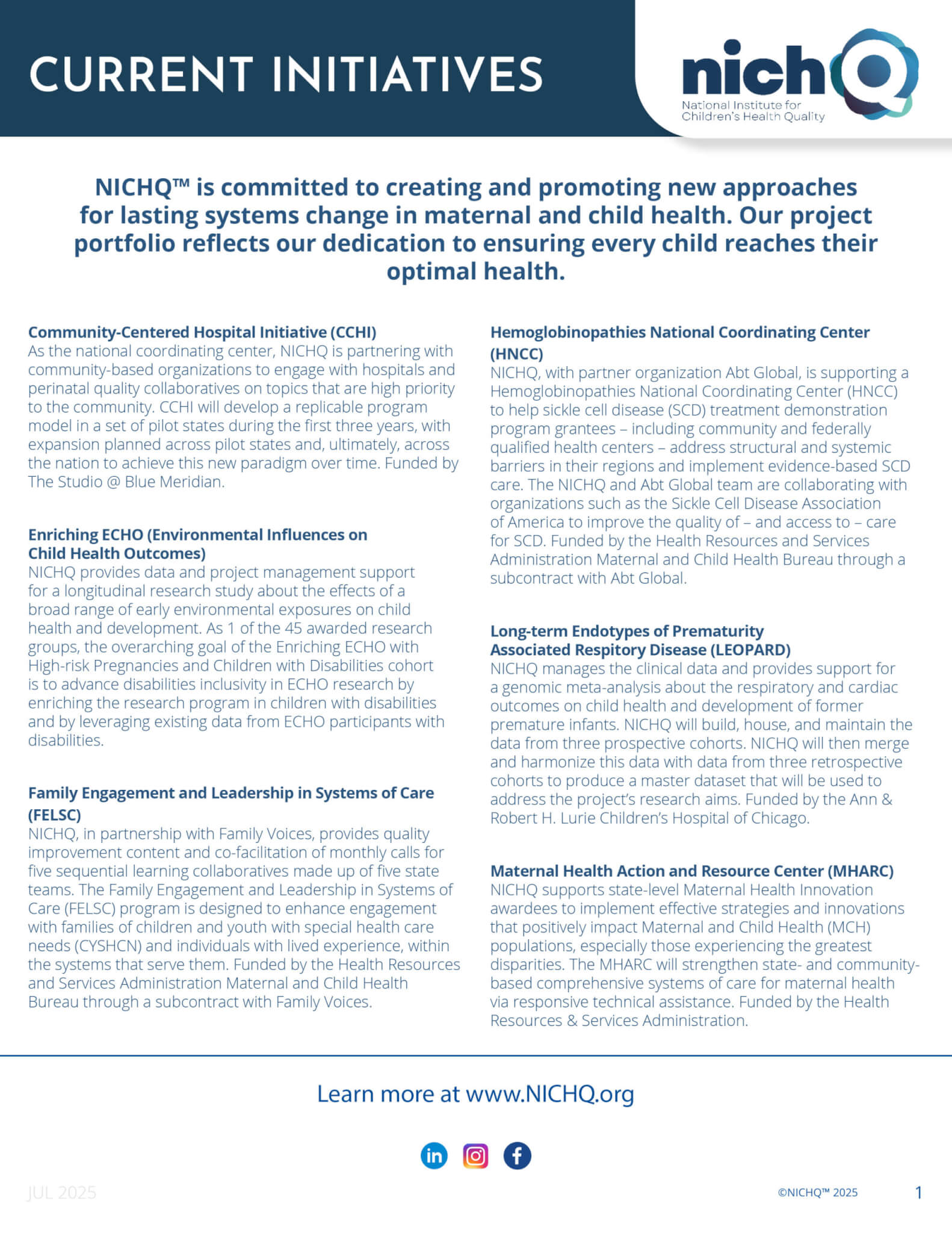New York State Maternal and Child Health Collaboratives
A series of learning collaborative projects to develop and implement promising perinatal interventions to provide the best and safest care for women and infants in New York State. Current projects include a focus on obstetric hemorrhage, opioid use disorder, and improvement of disparate birth outcomes.

Improving maternal and infant care
Who
Birthing hospitals and community-based organizations across New York State.
Our Role
NICHQ works closely with NYSDOH, clinical experts, and quality improvement experts to support a series of learning collaboratives that apply quality improvement methodology to improve perinatal care delivery.
Funder
The project is funded by The New York State Perinatal Quality Collaborative (NYSPQC), which is an initiative led by the New York State Department of Health (NYSDOH) Division of Family Health (DFH).
Other Information
If you are interested in learning more about this project, visit the NYSPQC page or email: [email protected]
Project Impact
MCH Collaboratives’ Impact
Project Impact
MCH Collaboratives’ Impact
From 2016-2023, NICHQ supported the New York State Department of Health (NYSDOH) in running the NYS Maternal and Child Health (MCH) Collaboratives. Specific projects that encompassed these Collaboratives included Enteral Nutrition, OB Hemorrhage, Opioid Use Disorder (OUD) in Pregnancy & Neonatal Abstinence Syndrome (NAS), and the initial planning for the NICU Equity project.
The goal of the OUD NAS Collaborative was to prevent, identify, and manage the care of people with OUD during pregnancy, improving the identification, standardization of therapy and coordination of aftercare of infants with NAS in NYS. To do this work, the project used a multidisciplinary approach to improve treatment for pregnant people with OUD and their newborns in multiple settings, including obstetrics, pediatrics/neonatology, social work, and community-based organizations, among others. 15 sites participated in the OUD and NAS project in the pilot phase, with 26 sites participating in the expansion phase. Between the two phases, since February 2019, over 250,000 maternity patients and newborns each were discharged home, over 2,500 maternity patients screened positive or presented OUD, over 3,000 newborns were exposed to opioids, and over 1,500 presented NAS diagnoses. Of the hospitals participating in NYS MCH, between 2019 and 2023, there was a 1100% increase of implementation of standardized guidelines for prenatal consult, a 333% increase in universal screening for OUD, a 333% increase of completed guides with local OUD treatment resource maps, a 533% increase of protocol implementation to connect pregnant people with OUD to addiction treatment services, a 1600% increase of standardized education for pregnant people with OUD on breastfeeding and NAS newborn care, and a 214% increase of hospitals implementing non-pharmacological guidelines for opioid-exposed newborns.
External Resources
State Perinatal Quality Collaboratives
List of PQCs funded by the Center for Disease Control and Prevention (CDC)
The Power of PQCs
Video showing the impact that PQCs have on the communities they serve. Produced by the NNPQC.
PQCs in the News
Articles in news outlets covering state PQCs, their activities, and the people that work in the collaboratives.
Patient Safety Bundles
From the Alliance for Innovation on Maternal Health. PSBs are collections of evidence-informed best practices that address clinically specific conditions in pregnant and postpartum people. The NNPQC helps provide TA and support to PQCs in adopting the core AIM Perinatal Mental Health Bundle.
Perinatal Quality Collaboratives
The CDC’s landing page for PQCs, including helpful infographics, videos, and links to help explain what PQCs are, how they work, and stories, learnings, and publications that have come out of the state PQCs.
Related Content
Resources produced by the New York State Maternal and Child Health Collaboratives project or on related topics
Meet Our Team
“In our deep organizational work to move along the Equity Systems Continuum from a Savior-Designed System to an Equity-Empowered System, we acknowledge the power of action. The potential is limitless for today’s commitments to improve the systems in which health care and public health professionals work and families receive care.”




